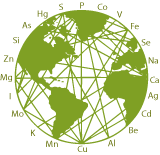Per- and polyfluoroalkyl substances (PFAS)
Per- and polyfluoroalkyl substances (PFAS) are a family of thousands of synthetic chemicals; relatively few have been studied for their effect on health. They are used widely to reduce friction or resist oil, water, and stains, and are widespread and persistent in the environment-
PFAS are absorbed in intestines and lungs; bind to serum and tissue proteins and most are not metabolized.
Nearly all people in the U.S. have had exposure to PFAS and communities with PFAS contamination of water or food are often near facilities that have manufactured, used, or handled PFAS.
Ingestion of PFAS in water and food is a main route of exposure; ingestion of dust and residue from PFAS-containing products can also result in exposure. Children can be exposed by drinking formula mixed with PFAS-containing water, drinking breastmilk from persons exposed to PFAS, ingesting dust or dirt, and through hand to mouth behaviors with textiles treated with stain protectants. Some PFAS cross the placenta and enter umbilical cord blood. The epidemiological evidence suggests associations between increases in exposure to (specific) PFAS and certain health effects – Increases in cholesterol levels (PFOA, PFOS, PFNA, PFDA) – Small decreases in birth weight (PFOA, PFOS) – Lower antibody response to some vaccines (PFOA, PFOS, PFHxS, PFDA) – Kidney and testicular cancer (PFOA) – Pregnancy-induced hypertension or preeclampsia (PFOA, PFOS) – Changes in liver enzymes (PFOA, PFOS, PFHxS).
Health Risk
The risk of health effects associated with PFAS depends on – Exposure factors (e.g., dose, frequency, route, and duration) – Individual factors (e.g., sensitivity and chronic disease burden) – Other determinants of health (e.g., access to safer water and quality healthcare).
PFAS- RESEARCH
University Cambridge researches find that gut microbes can protect us from PFAS, also called the Forever-Chemicals.
https://www.cam.ac.uk/research/news/gut-microbes-could-protect-us-from-toxic-forever-chemicals
